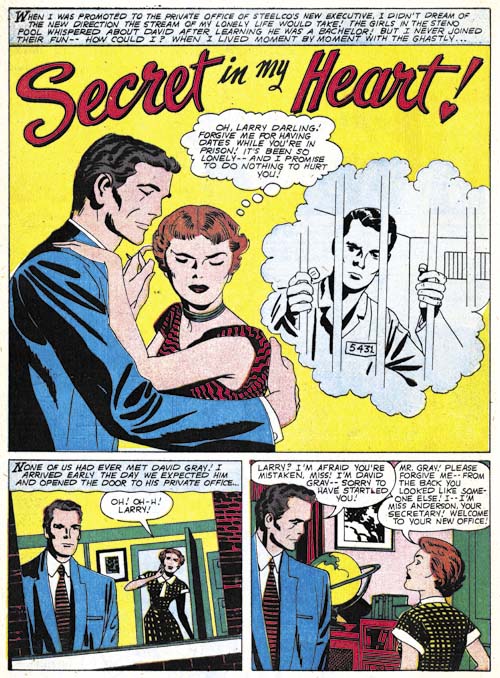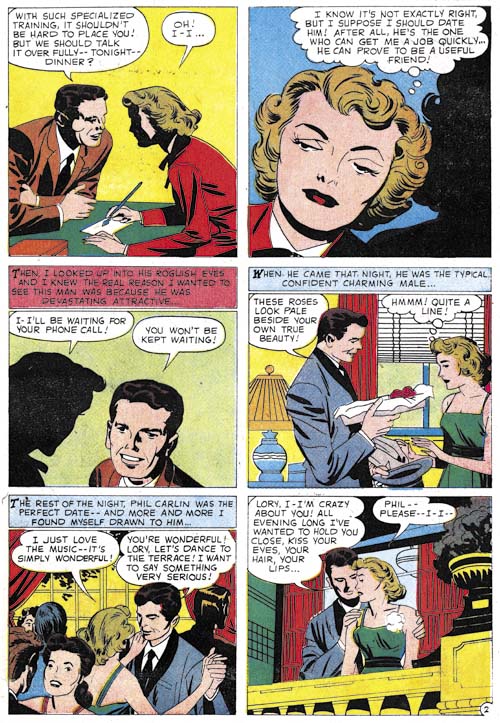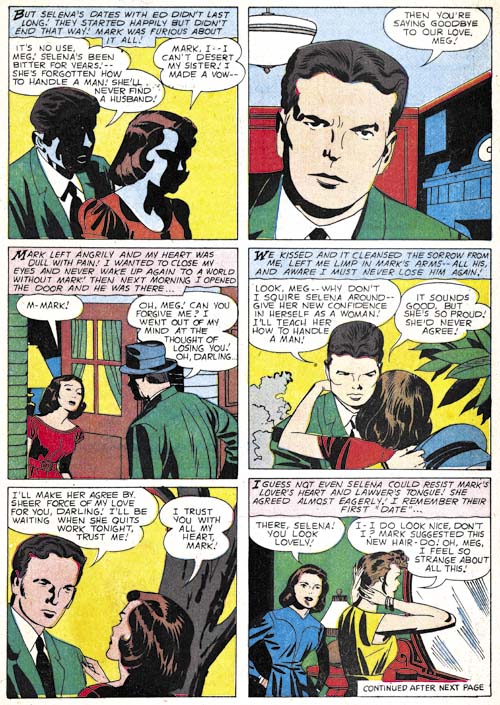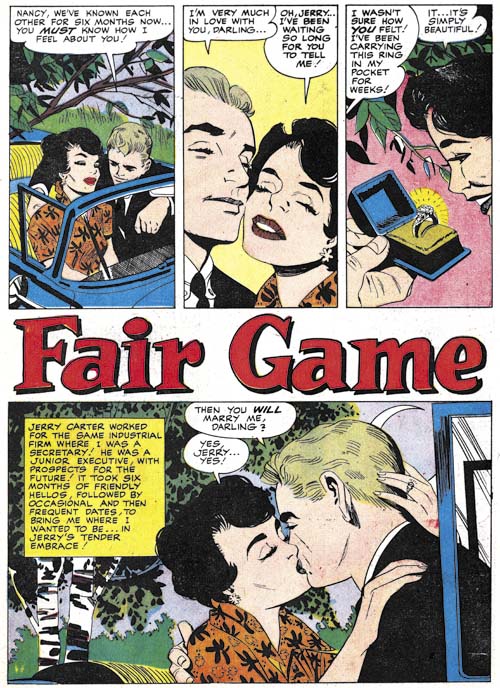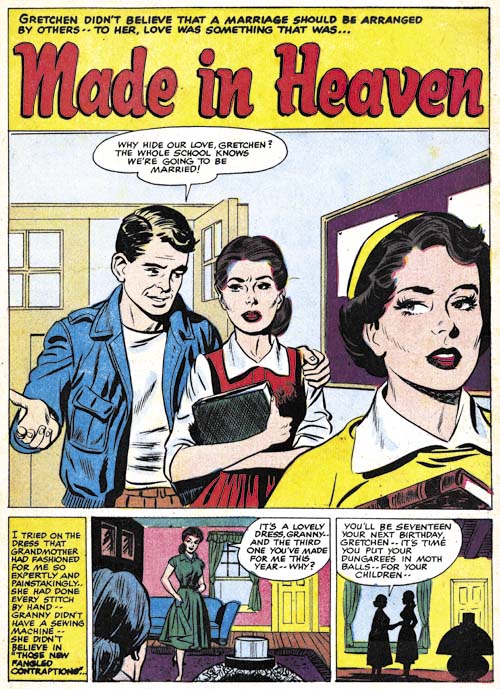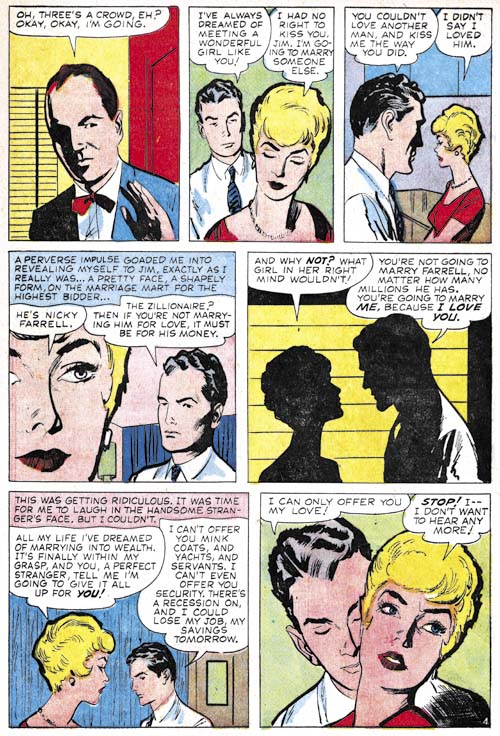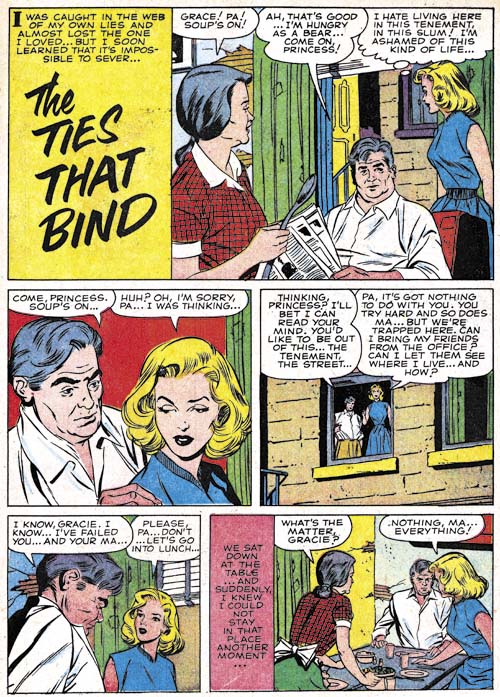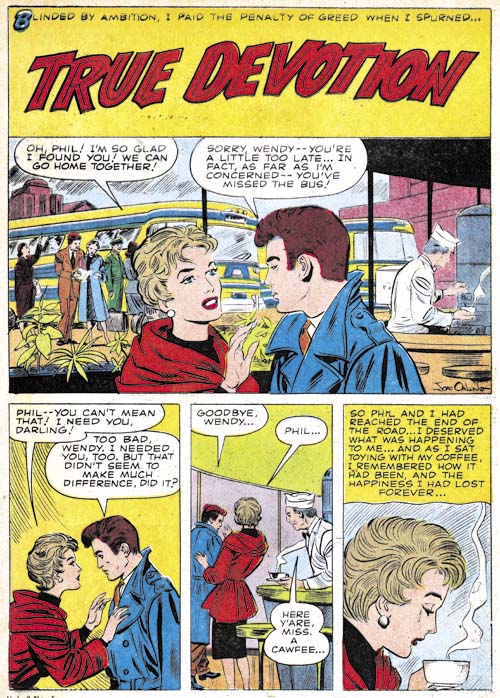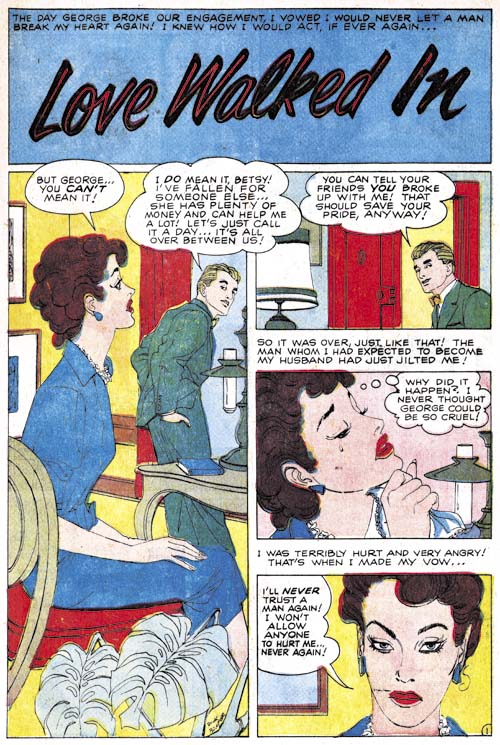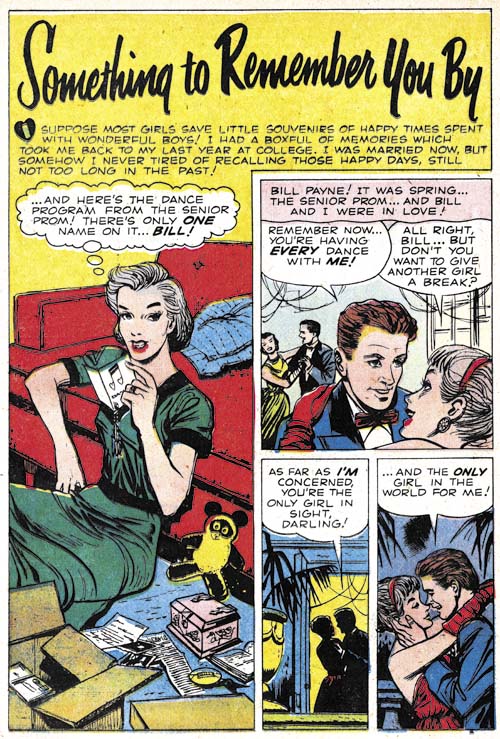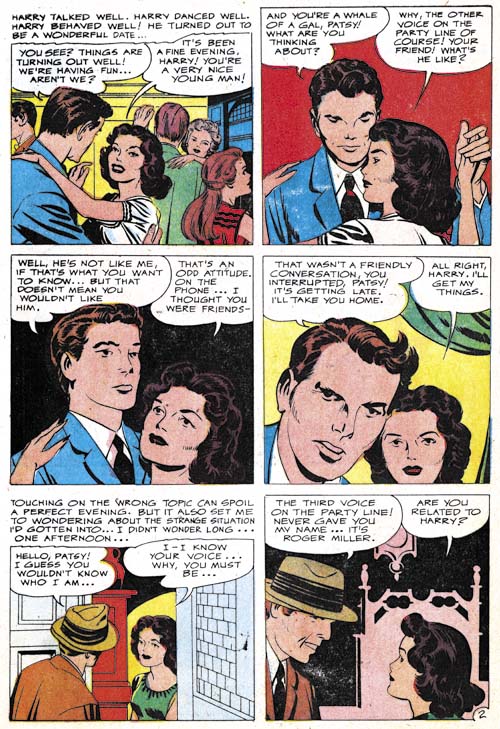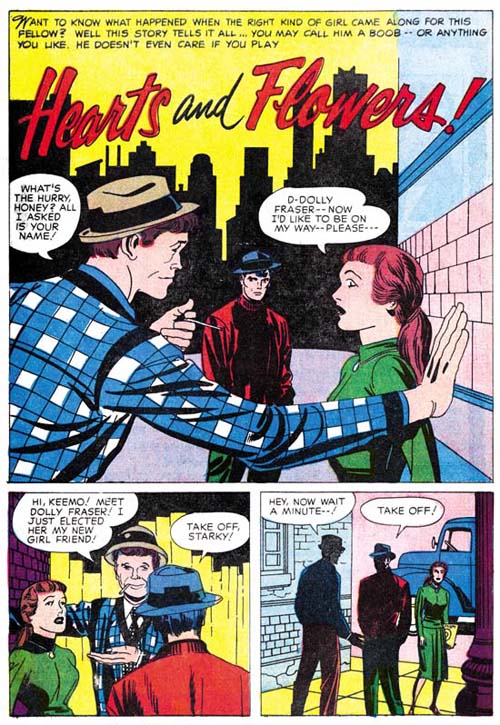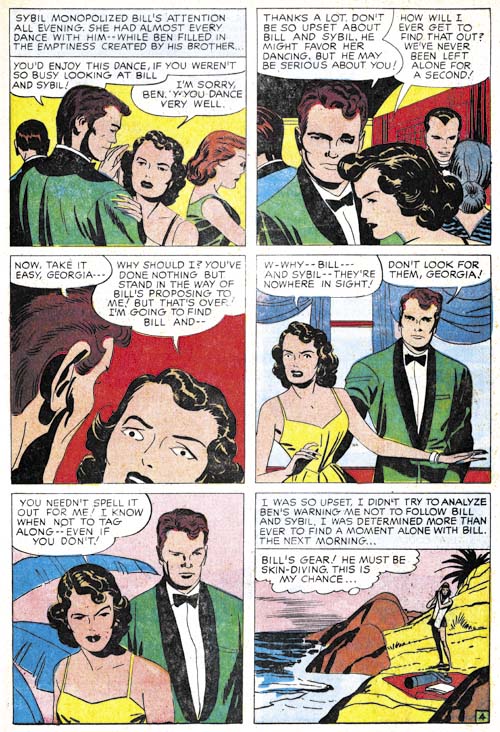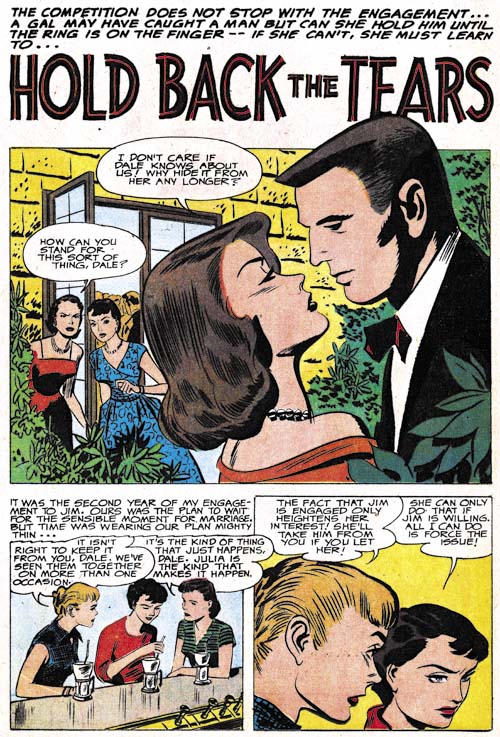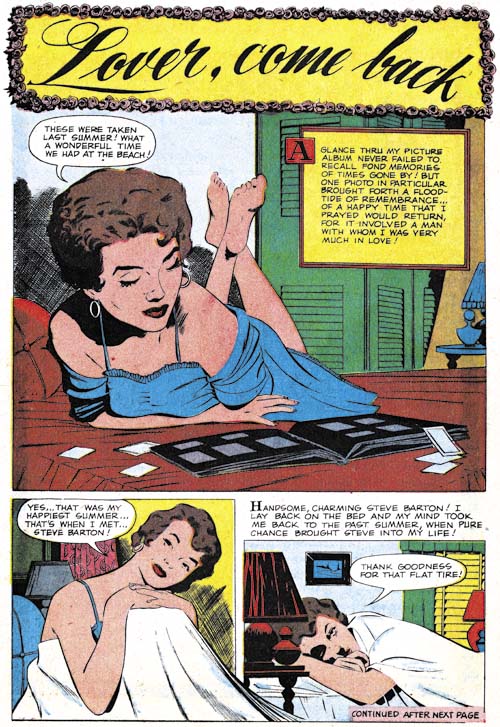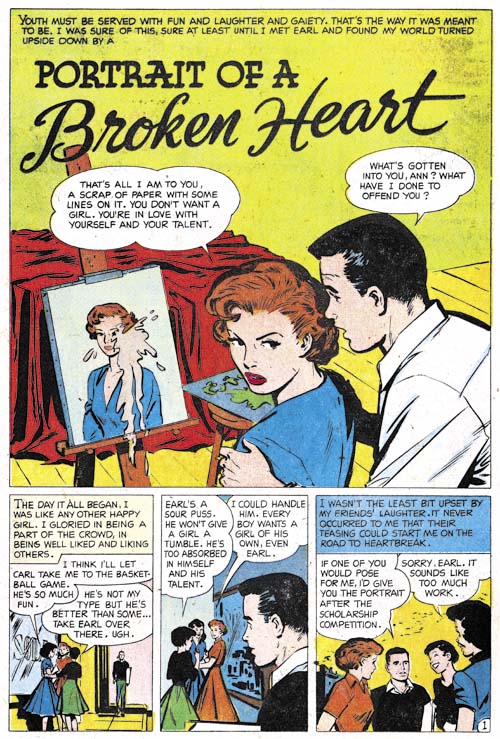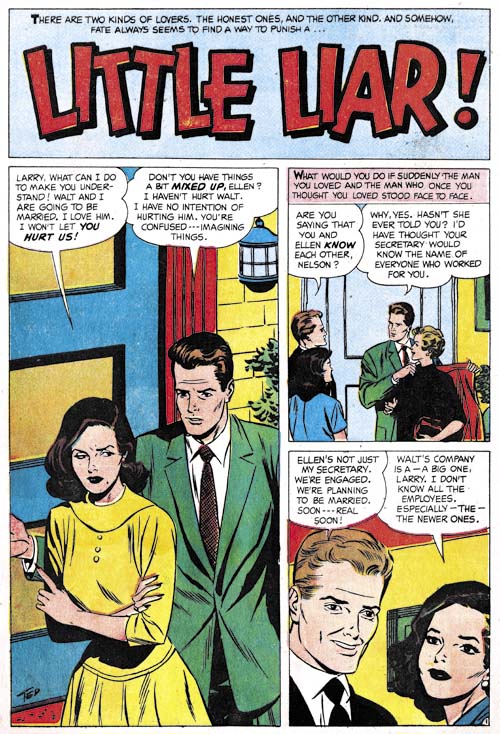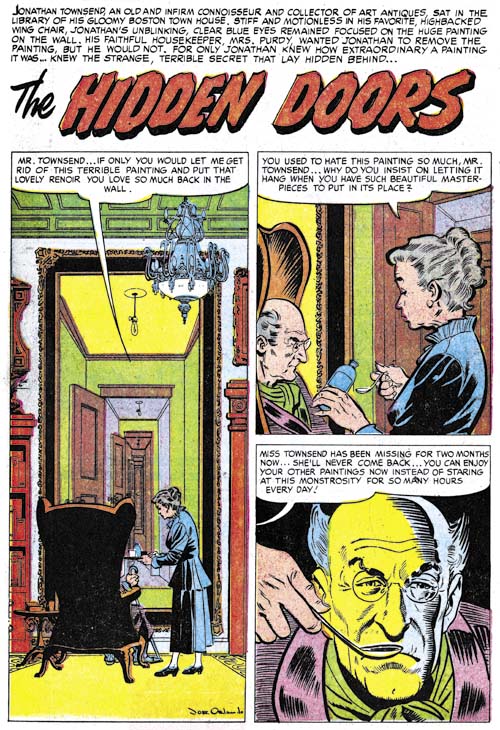After Simon and Kirby stopped producing the Prize crime titles, Bill Draut did not contribute much as compared to artists previously discussed in this serial post, Marvin Stein and Mort Meskin. But he is an artist that I admire and it is nice to see him get a chance to work on a genre other than romance.

Justice Traps the Guilty #71 (February 1955) “Escape” page 3, pencils and inks by Bill Draut
Draut’s first return to the Prize crime titles occurring in Justice Traps the Guilty #71 (“Escape”, February 1955). I do not understand why Bill decided to do this piece. Draut seemed to be getting a fair amount of work from Joe and Jack so why do work for the Prize crime comics which I believed offered less money? But whatever the motivation, Draut did a nice job. I provide an example of an action sequence which Bill handles quite well. Still it does not read quite as well as say similar fight sequences by Marvin Stein. How did the hero manage to flip the attacking criminal in the last two panels?
Draut did his own inking on just about everything he did, well at least up to 60’s. His inking manner in “Escape” pretty much matches what he had been using earlier. I guess the best description would be splotchy. Not really messy but with clothing dominated by rounded areas of black and with little use of narrow smooth folds.

Headline #74 (January 1956) “Never See Morning”, pencils and inks by Bill Draut
Whatever reasons Draut had for doing “Escape” it was an isolated piece. Draut would not do any other crime work for the rest of 1955 (cover date). His return to the crime titles in 1956 is easy to explain. During that year Jack Kirby began to draw pretty much all the contents of the Prize romance comics. Since those romance titles were the main source of work for Draut, this left him much in need of other sources of income.
Draut would draw a peculiar series for Headline. The hero of the feature was a gossip columnist whose evening work at places like night clubs placed him in a position to fight crime as well. But that is not was peculiar about the feature, what was odd was that there never was anything in the title to indicate that this was a serial feature. You learned his name, Nick Kolby, in the story but it was only once mentioned in the title and even then not prominently. There seemed no reason not promote the feature as that was done for another returning feature in Headline at that time, Flash Cameron, a newspaper photographer who also fights crime. If Prize thought another newspaper crime fighter was too much, then why have not have Draut do some other type of crime fighter?
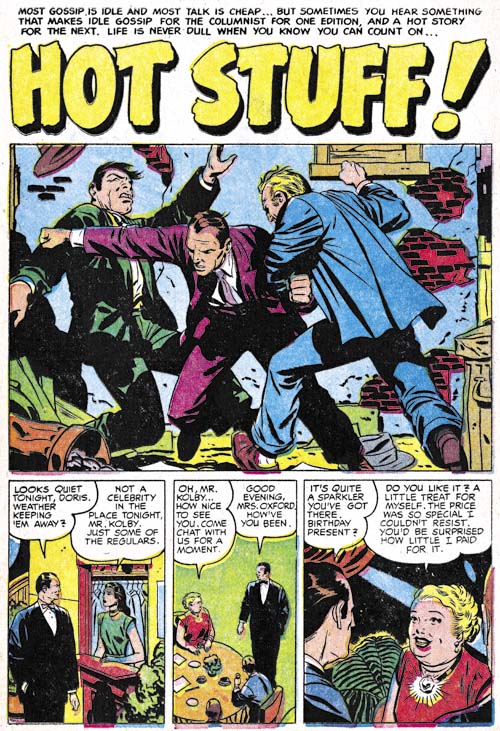
Headline #75 (March 1956) “Hot Stuff”, pencils and inks by Bill Draut
Nick Kolby could handle himself pretty well for a gossip columnist. This gave Draut a chance to do some action scenes which were something that he did not often get to do for the romance art that predominated his work for Simon and Kirby. Much earlier in his career Bill did action in some features like the Red Demon and Calamity Jane and Draut has greatly improved in his ability to draw convincing and effective action.
Draut inking seems to be changing having less of the splotchy effect with cleaner lines and an over all lighter look. Previously I had credited his style change as due to working for DC but I do not believe Bill had started with DC yet. However it was his inking style that was changing, not the way he did his pencils.
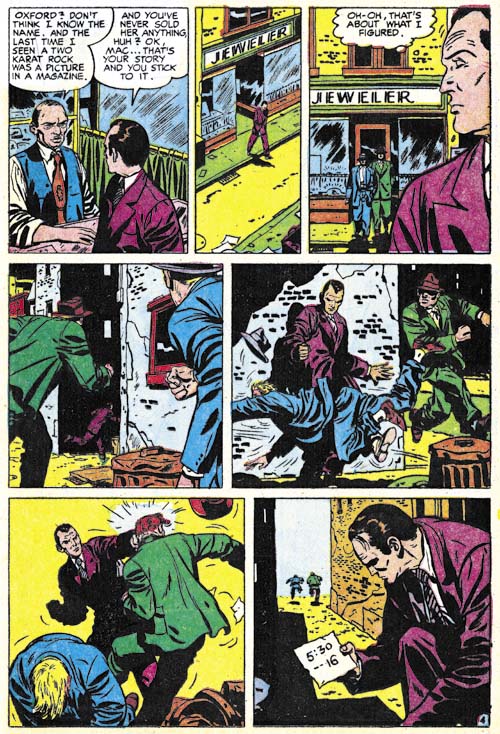
Headline #75 (March 1956) “Hot Stuff” page 4, pencils and inks by Bill Draut
“Hot Stuff” also provides and example of Draut handling an action sequence. He does it quite well although panel 5 takes a closer examination in order to figure out what the hero was doing (tripping his first pursuer). This is not quite the action choreography as used by Jack Kirby or even Marvin Stein, but Bill does have his own way of handling it.
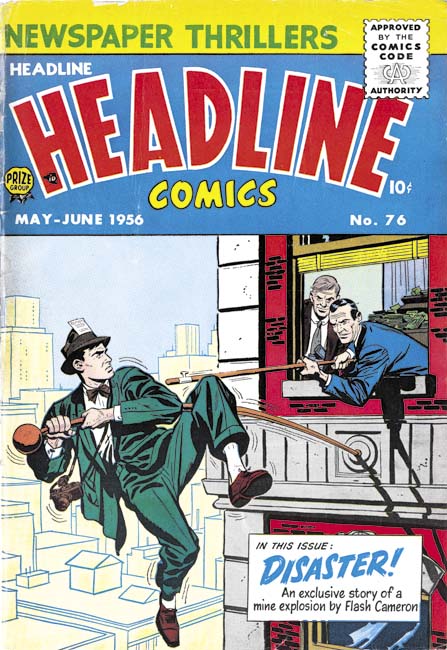
Headline #76 (May 1956), pencils and inks by Bill Draut
I used to think that Jack Kirby and Marvin Stein were the only artists who drew covers for Headline Comics. However Headline #76 (May 1956) eluded me until recently and I previously believed it was by Stein based on some low resolution scans I had seen. But when I finally got a copy I saw I had clearly been mistaken. There were Bill’s classic eyebrows and the way the bricks are clustered into isolated patches is a typical Draut technique. It is surprising that Draut instead of Stein did this cover since Marvin was the primary artist at this time. Also surprising is that Bill’s cover illustrates Flash Cameron a feature that Ted Galindo drew in this issue. Now there are any number of contingencies that we would never know about that might brought about Draut providing this cover, but I would like to suggest one possibility. Perhaps the cover was originally meant to portray Nick Kolby, a feature that Bill drew. Take away the camera and the press pass in the hat and this is a good match for Kolby. Those two features could have easily been added by Bill or another artist to convert it from Kolby to Cameron. Without the original art we will never know for sure.

Headline #77 (September 1956) “Hide and Seek”, pencils and inks by Bill Draut
I could not resist on last example from Draut’s Nick Kolby feature. This was also Bill’s last appearance in Headline and Nick Kolby ended here as well. Since this feature was drawn by Draut and no other artist, it seems likely that Draut was involved in its creation. I never heard of Draut writing scripts but perhaps he teamed up with some writer.
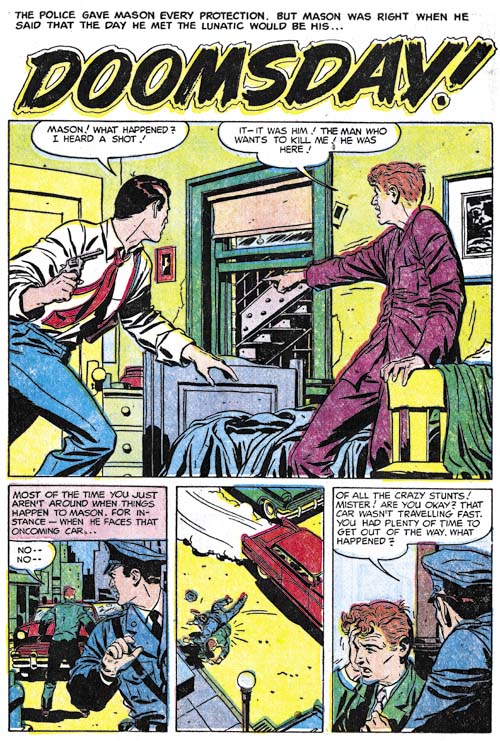
Justice Traps the Guilty #82 (May 1955) “Doomsday”, pencils and inks by Bill Draut
I do not want to convey the false impression that Bill Draut was only providing work for Headline during this period. Draut was doing work for Justice Traps the Guilty as well. However that work was for individual stories and not some continuing feature.


